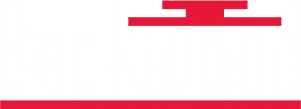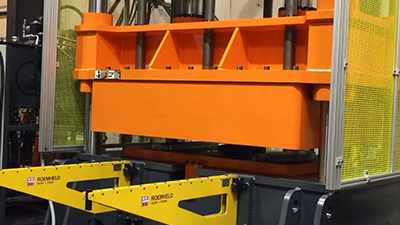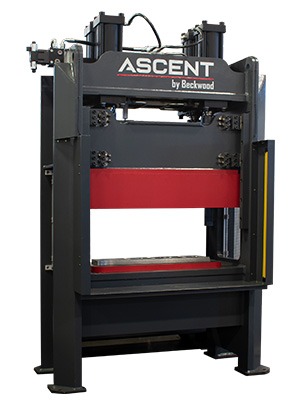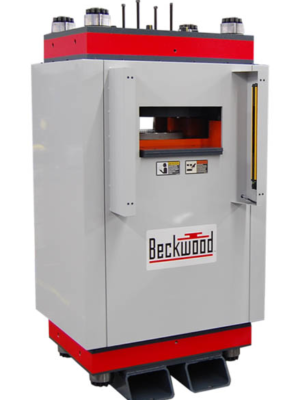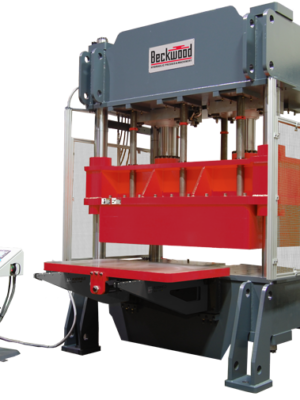A rubber pad press, also known as a Guerin box press or elastoforming press, uses an enclosed rubber or urethane pad box as a universal die half to form parts over a single, un-mated tool. During a cycle, tooling and blanks rest unsecured on the press bed. The press ram, with a rubber pad box attached, extends over the tool and blanks to create downward force on top of the part. The fully-contained pad box prevents the rubber from extruding outside of the work area during the forming process. Ideal for making simple parts quickly, a rubber pad press offers versatility for low-volume, high-mix production environments. Additionally, rubber pad boxes can be ordered separately and attached to most existing hydraulic presses.
The versatility of the forming area and low-cost tooling allow for multiples of the same part or several different parts to be run in a single cycle as long as the tools and blanks fit into the working area of the press. Tools are made quickly and economically from a variety of materials including steel, aluminum, poured epoxies, 3D printed substrates, and even wood. This can reduce tooling costs by 50-90% and dramatically decrease changeover time when compared to conventional press tooling.
With Beckwood’s custom rubber pad presses, you can form large parts at a lower upfront cost than sheet hydroforming, but secondary finishing will be required in many cases.
Advantages of Rubber Pad Forming Presses
- Cost efficient
- Unmated, low-cost tooling
- Form multiple parts in one cycle
- Durable rubber pads
Alternatives to Rubber Pad Forming
The inexpensive tooling and ability to run multiple parts in a single cycle are amplified in our line of sheet hydroforming presses. Similar to rubber pad forming, sheet hydroforming offers all of the same benefits plus a more even distribution of force across the part’s surface. The result is net-shape part production without secondary finishing.
ARTICLE: Learn how Milford Fabricating improved their production time by 20% with a Beckwood Rubber Pad Press
Explore Beckwood’s sheet hydroforming solutions


